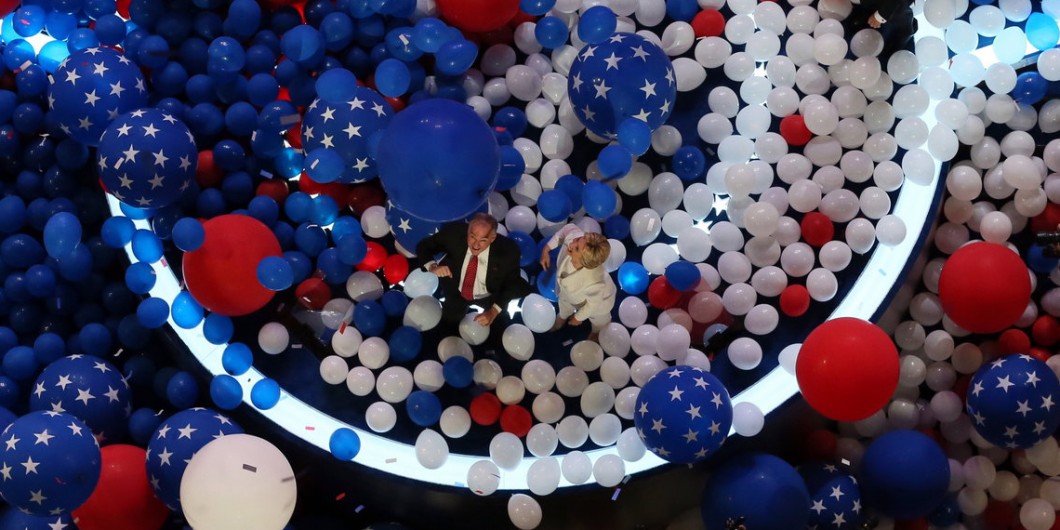In the last two weeks, we have been treated to the spectacle of both the Republican and the Democratic national conventions. These large-scale U.S. political events, televised for the enjoyment of all, feature speeches, bombastic declarations of support, demonstrations of party unity and other moments that built the candidate’s future presidential image. Festivities included speeches by candidates eliminated during the primaries, freshly minted running mates and potential first spouses—a new, more inclusive terminology. There were impassioned speakers, pleas for a return to universal values and some notable shades of previous speakers. In short, everything you could ever want from a political convention. But this year, something was different.
Republican National Convention: Make America Hate Again
Rise of the angry white male and death of political reality TV
Ever since he was announced as a candidate, not a week goes by without some journalist, reporter or other commentator announcing the demise of the Trump campaign, too-long fed by highly publicized controversies. Many believe that Trump’s minimal advertising budget signals the decline of TV’s role in political debate. But the opposite is actually true. Donald Trump was the most covered, the most televised and the most visible candidate during the primaries. According to the Shorenstein Center on Media, Politics and Public Policy, part of the Harvard Kennedy School, the tone of this media coverage was largely positive—even if he hadn’t yet been designated as the official candidate*.
The Republican convention signaled the end of hostilities between warring members of the GOP and the crowning of an unexpected and improbable outsider. Trump has gotten this far because he strikes a chord with the “angry white male” and it’s an advantage that he hopes will curry favour with a “silent” majority that feels more comfortable making comments online than speaking up in major media sources.
However, Trump seems to be increasingly alone in this strategy. He has not received the endorsement of any ex-Presidents, Cruz has refused to support his candidacy, his own wife couldn’t muster any original thoughts in her speech and Sarah Palin, who has never declined an opportunity to air her views, didn’t even make the trip to Cleveland. Obviously, U.S.-Russian tensions must be too high for her to leave her observation post in Alaska.
Republican strategists, if they haven’t given up yet, don’t seem to understand that the American electorate is no longer the homogenous block it once was. Mitt Romney, despite winning 59% of the white vote, was unable to prevent the reelection of Barack Obama in 2012. Comparatively, in 1980, getting 55% of the white vote was more than enough to help Ronald Regan move into the White House. In that election year, black and hispanic votes only comprised 12%. That segment has doubled in 2012. As Paul Ryan’s selfie has proved, the Grand Old Party is now just mostly old.
Although Trump loves to pump up his voter base, he will ultimately come up short. His bet that a political spectacle would mobilize the electoral vote fizzled with television audiences watching the convention. His speech only registered 2 million more viewers than Romney (2012) and nearly 7 million less than McCain (2008).
Many have demonstrated that, as a voter, you don’t need to listen to political speeches, but no one is talking about the social movement they want us to believe in.
Democratic National Convention: Micro-targeting and tactically winning over the majority
Despite the disappointing announcement that the Democratic National Convention would choose Clinton over Sanders and the very vocal frustration of his supporters (“Bernie or bust!”), this convention did succeed in presenting a more unified image. A series of high-profile Democratic bigwigs were united by their support of Hillary and equally, by their fear of a White House pimped out in neon, like the Trump Towers.
What emerged as the core of the Democratic strategy was the desire to reach out to micro-segments of the electorate, to woo specific demographics and to warm up marginal groups otherwise deemed too small to warrant attention in the national media. Although the recurring theme was to underline Hillary as a candidate worth trusting, each speaker seemed to focus on a specific message or micro-segment. For Michelle Obama, it was the black vote. Bloomberg, the business community. Warren, women. Kaine, the Spanish vote. Sanders, the progressives. Bill Clinton named ten or more different states, each time rousing thunderous applause, but he also reminded us that his wife got involved in politics because she cares. President Obama underlined that Hillary is more competent than most (including Bill and himself) to take on the job. And her daughter Chelsea told us how Hillary was both a career woman and a present, loving and responsible mother.
The hope of the Democratic party rests on a strategy to reach out to many small sub-groups. All of the speeches were resoundingly positive and the U.S. electorate will certainly celebrate the triumph of optimism over fear this fall. The first speaker said it best, “When they go low, we go high.”
*http://shorensteincenter.org/news-coverage-2016-presidential-primaries/


